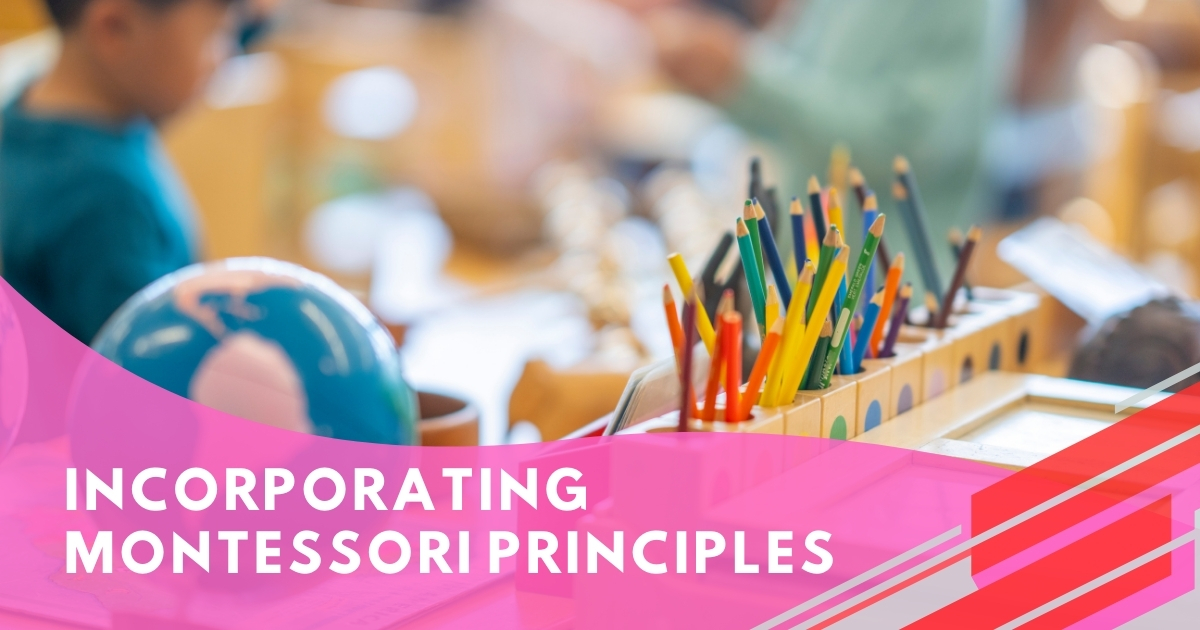If you are looking to enrich your homeschool experience, Montessori homeschool methods might be the perfect fit. Montessori education focuses on fostering independence, hands-on learning, and encouraging a love for exploration. These principles can transform your homeschool into a more engaging and dynamic space.
By incorporating Montessori principles, you encourage self-directed learning while creating a child-centered environment. This approach helps children develop critical thinking, problem-solving skills, and a sense of responsibility. And the best part? You don’t need to replicate an entire Montessori classroom. Any homeschooling family can integrate these ideas into their teaching style, regardless of their resources or setup.
This blog will guide you through actionable steps to bring Montessori-inspired learning at home, empowering your child to thrive academically and personally.
Create a Prepared Environment
One of the core elements of Montessori education is creating a prepared environment. This means setting up your homeschool space to encourage independence and curiosity. Imagine a space where your child can easily access materials, select activities on their own, and put things back without needing constant help.
Here are some tips to design a Montessori-inspired homeschool environment:
- Use child-sized furniture, such as small tables and chairs. This allows your child to work comfortably.
- Keep materials accessible. Store math manipulatives in baskets, place books on low shelves, or arrange science activities on trays.
- Maintain order. Organizing supplies in bins and labeling them encourages kids to tidy up after themselves.
A well-organized space signals to your child that learning is both important and enjoyable. Research shows that an organized environment enhances focus and productivity in children, making it an essential starting point for Montessori homeschool methods.
Follow the Child
At the heart of Montessori homeschool methods is the concept of “following the child.” This practice revolves around observing your child’s interests and using them as a foundation for learning. Instead of rigidly sticking to a pre-set schedule, you create opportunities for your child to explore subjects that genuinely excite them.
For example:
- If your child loves animals, consider tailoring lessons around biology, ecosystems, or writing stories about wildlife.
- Allow flexibility by giving your child time to dig deeper into topics they find fascinating.
Striking a balance between structure and freedom ensures your child stays engaged while meeting academic goals. Studies have demonstrated that child-led education techniques lead to higher motivation and deeper understanding compared to one-size-fits-all teaching methods.
Use Hands-On Learning Materials
Montessori-inspired learning at home focuses on engaging the senses with hands-on materials that make abstract concepts easier to understand. Instead of just reading or listening, children can see, touch, and manipulate objects to truly grasp what they are learning.
Math concepts can become exciting with tools like number beads, counting blocks, or fraction circles. For science, household items can double as learning tools—try using 3D models, magnifying glasses, or simple materials for easy experiments. Language arts can be explored through letter tiles or storytelling prompts, helping kids develop literacy skills in a fun, interactive way.
If you’re on a budget, there’s no need to worry. DIY materials or repurposing items from around the house, like dried beans for counting, work just as well. Hands-on activities not only make learning enjoyable but also engage multiple senses, which helps improve memory retention and comprehension.

Encourage Independence and Responsibility
Montessori principles place great emphasis on fostering independence in children. Learning becomes more meaningful when kids are encouraged to take ownership of it. You can build independence by giving your child choices in their daily routine or assignments.
Consider these strategies:
- Create a checklist of daily tasks so your child knows what needs to be accomplished, giving them a sense of responsibility.
- Provide options for the order of activities, letting them decide whether they want to tackle math or writing first.
- Incorporate life skills, like organizing their workspace, meal preparation, or folding laundry, alongside academic lessons.
Even small steps, like letting a younger child pour their own drink or an older one set goals for the day, build confidence and decision-making skills. Research highlights that children who practice independence early often develop better problem-solving and organizational abilities as they grow.
Integrate Nature and Real-Life Experiences
A key principle of Montessori homeschool methods is connecting learning to the real world. Nature and practical life experiences play a central role in this approach, turning everyday activities into powerful teaching opportunities.
One way to integrate nature into learning is to take lessons outdoors. Go on nature walks to explore ecosystems, plant a garden to study botany, or observe weather patterns firsthand. These hands-on experiences make learning engaging and memorable.
Practical life activities are another valuable tool. Teaching skills like meal preparation, community service, or household chores not only develops responsibility but also gives children a sense of accomplishment. These tasks tie learning to real-world applications.
Using materials from nature adds another layer of creativity. Pinecones, leaves, and rocks can be transformed into tools for science lessons or art projects, making education both fun and meaningful.
Time spent outdoors has been shown to improve children’s focus, creativity, and mood. Combining real-life experiences with academics not only makes learning feel purposeful but also helps kids connect concepts to the world around them.
Focus on Grace and Courtesy
Montessori education emphasizes grace and courtesy, fostering essential social skills that are just as important as academic achievements. These teachings promote kindness, respect, and collaboration, which benefit children in all areas of life.
Ways to incorporate grace and courtesy include:
- Model positive behavior like resolving conflicts calmly or showing gratitude.
- Practice polite conversation during group activities, even if it’s just with siblings.
- Encourage group learning moments where siblings or homeschool co-op peers can work collaboratively on a project or task.
Teaching social skills this way not only helps children interact positively with others but also builds emotional intelligence. Child-led education techniques that emphasize collaboration often lead to stronger communication and teamwork abilities over time.
Start Your Montessori Homeschool Journey Today
Integrating Montessori homeschool methods into your routine can transform the way your child learns and grows. This approach nurtures independence, curiosity, and practical skills that go beyond the classroom. By creating a prepared environment, using hands-on materials, and following your child’s interests, you’re fostering a love for learning that can last a lifetime.
Remember, you don’t need to overhaul your homeschool setup overnight. Start small. Try creating an organized workspace or introducing one hands-on activity. Watch how your child responds and gradually incorporate more ideas as you feel comfortable.
If you’re ready to explore more resources, tips, and guides to enhance your homeschooling experience, visit Dropkick Homeschool Resource today. Whether you’re new to Montessori-inspired learning at home or a seasoned pro, there’s something here to support every step of your homeschooling adventure!



